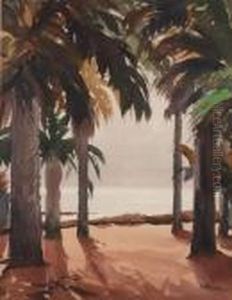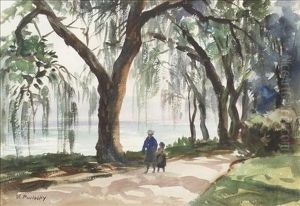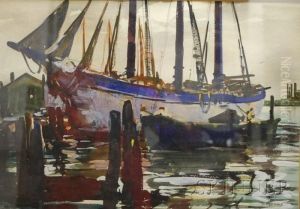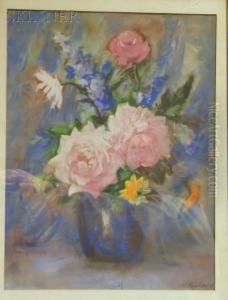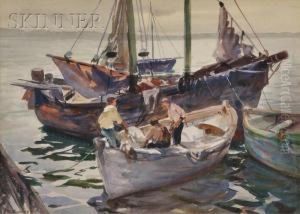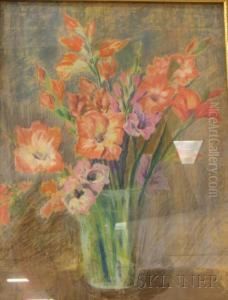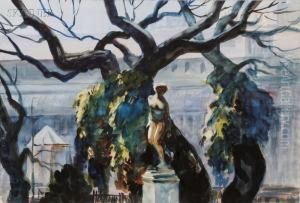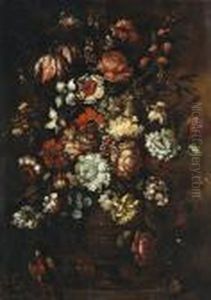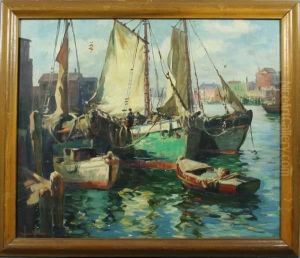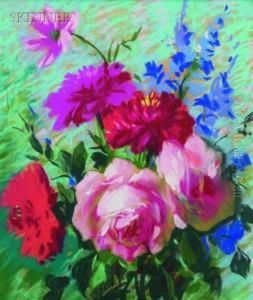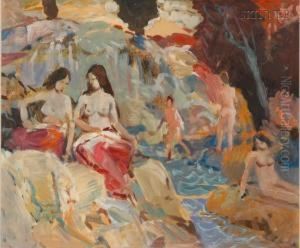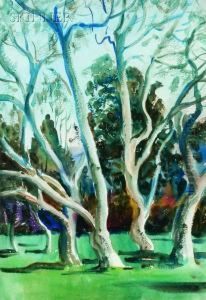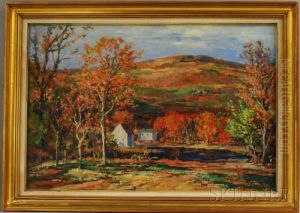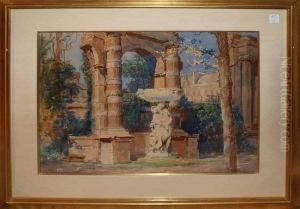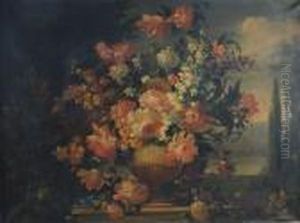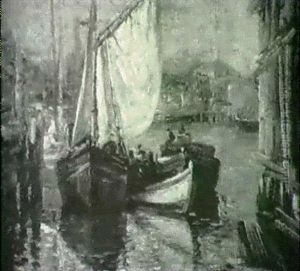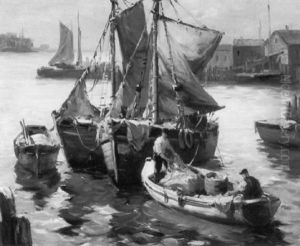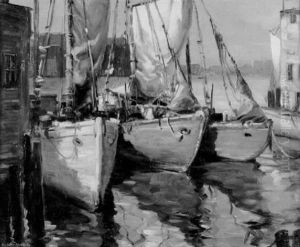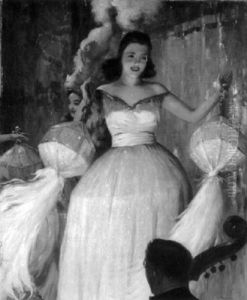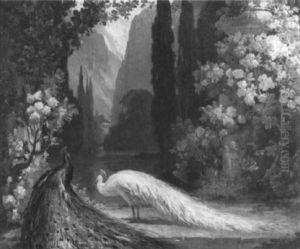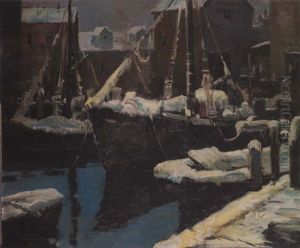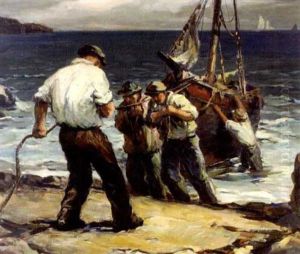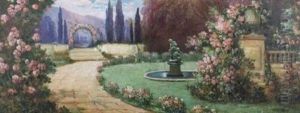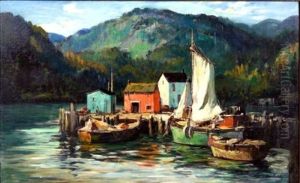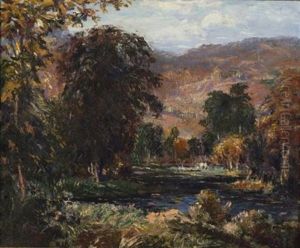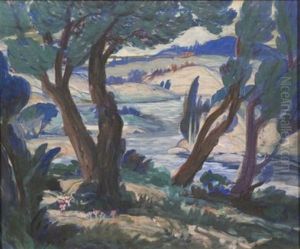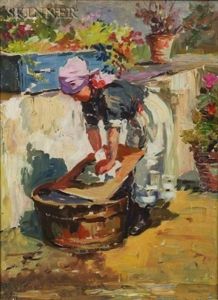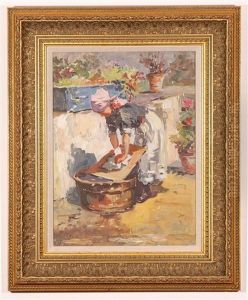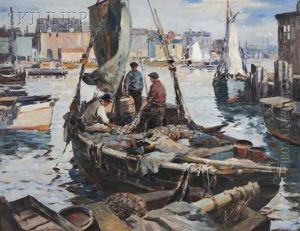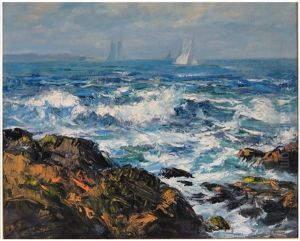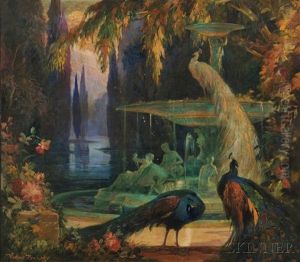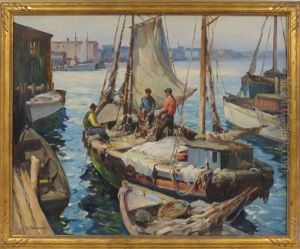Vladimir Pavlosky Paintings
Vladimir Pavlosky was a Russian-born artist known for his impressionist landscape paintings, which often depicted the scenic beauty of the Russian countryside as well as various European locations. Born on September 23, 1884, in the town of Oryol, in the Russian Empire, Pavlosky developed an interest in art at a young age. His early education is not extensively documented, but like many artists of the time, he likely received traditional training in drawing and painting techniques.
As a young man, Pavlosky moved to Moscow where he continued his artistic education. He was part of a vibrant artistic community that was experiencing a period of great change and experimentation, influenced by the various movements that were sweeping through Europe, such as Impressionism and Post-Impressionism. Pavlosky's work began to gain attention for its vivid use of color and dynamic brushwork, which captured the transient effects of light and atmosphere in his landscapes.
Pavlosky traveled extensively throughout Europe, which further influenced his style and subject matter. He spent time in France, where he was undoubtedly exposed to the works of the French Impressionists, who would have a lasting impact on his approach to painting. His works from this period show a keen interest in capturing the changing qualities of natural light, similar to the techniques used by artists like Claude Monet and Camille Pissarro.
Despite the political turmoil in Russia, including the Russian Revolution of 1917 and the subsequent civil war, Pavlosky continued to paint and exhibit his work. He also taught at various art institutions, sharing his knowledge and skills with a new generation of Russian artists. Unfortunately, Pavlosky's later years were marked by the increasing difficulties faced by artists in the Soviet Union, where the state began to impose strict controls on artistic expression.
Vladimir Pavlosky passed away on March 18, 1941, leaving behind a legacy of beautiful landscapes that captured the essence of the Russian countryside and the European locales he visited. His work remains appreciated for its contribution to Russian Impressionism and is featured in several Russian museums, as well as private collections around the world.
